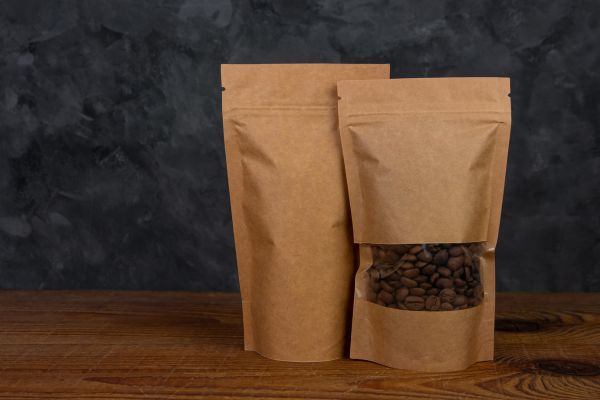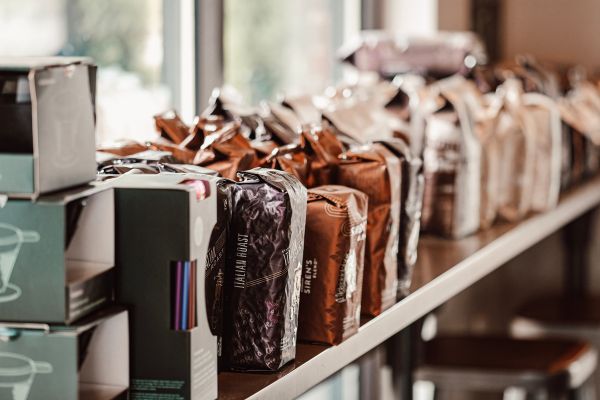In the quest for sustainability, coffee aficionados, and environmentally-conscious consumers alike often wonder about the proper methods for recycling coffee bags. These bags, typically composed of a combination of materials such as paper, foil, and plastic, present unique challenges due to their intricate composition. The question on all our lips is, can you recycle coffee bags?
This article delves into the diverse materials used to manufacture coffee bags and pouches, shedding light on their purpose and their environmental implications and offering guidance on how coffee enthusiasts can be more sustainable.
Materials Used to Make Coffee Bags and Pouches
Before delving into whether you can recycle coffee bags, it helps to understand their composition. Most coffee bags feature a multi-layered design comprising materials like paper, foil, and plastic. This amalgamation of materials aims to preserve the freshness and aroma of coffee beans, ensuring consumers enjoy a flavorful cup every time. However, this mixed material composition complicates the recycling process, resulting in the need for specialized approaches in order to recycle coffee bags effectively.

Here’s a breakdown of common coffee bag materials used today:
- Paper-only bags: paper serves as the primary component in many types of coffee bags, providing a sturdy foundation that withstands handling, transportation, and storage. However, on its own paper does not necessarily protect the contents it requires an added layer of plastic or similar.
- Foil-Lined Paper Bags: These bags often feature a paper exterior for printability and a foil lining to preserve coffee freshness. The combination of paper and foil creates a barrier against moisture, oxygen, and light, safeguarding coffee aroma and flavor; however, it adds complexity for recycling as the paper and foil cannot be recycled together.
- Plastic Coffee Bags: Made predominantly from polyethylene or polypropylene, plastic coffee bags provide flexibility, sealability, and durability. Plus, plastic plays a part in other types of bags where it is often incorporated to create a resealable closure or valves and ties.
- Laminated Coffee Bags or Stand-Up Pouches: These bags employ a combination of materials to create a vacuum-sealed environment that extends coffee shelf life. Laminates combine the strength, printability, and versatility of various materials, such as paper, foil, and plastic, to create robust, functional, and aesthetically pleasing packaging solutions. However, as with foil-lined bags mentioned above, these multi-layer materials pose many challenges for recycling.
- Biodegradable Coffee Bags: Composed of plant-based materials such as cornstarch or other renewable resources, biodegradable coffee bags prioritize environmental sustainability by degrading naturally, reducing landfill waste, and minimizing ecological impact. There are many types of biodegradable materials so it is important to understand these options may not always be the most sustainable.
- Compostable Coffee Bags: Compostable materials used in coffee bags are a step in the right direction. When you do come across these types of bags, be sure to check if they are compostable at home or if they need to go through industrial processes. If a commercial service is required and you don’t have access nearby, this can mean they end up in a landfill anyway.
As sustainability gains prominence within the coffee industry, manufacturers explore eco-friendly alternatives to traditional packaging materials. Biodegradable films, compostable plastics, and recyclable laminates emerge as viable solutions to reduce environmental impact, mitigate waste generation, and promote circular economy principles. But there is still some way to go for significant improvements.
Can You Recycle Coffee Bags?
Recycling coffee bags is tricky, given all these different types of materials. The best types of bags are those with single materials as this allows them to be recycled more easily. Laminated bags or pouches are the most difficult to recycle due to their mix of paper, plastic, and foil.
By understanding the composition of coffee bags, seeking out specialist recycling programs, and following their recycling guidelines, individuals can help reduce waste to landfills and associated environmental impacts.
Step-by-Step Recycling Guide
1. Check Local Curbside Recycling Guidelines
It’s very unlikely that you’ll be able to recycle your coffee bag in your local curbside recycling program. Only a handful of coffee bags are actually recyclable, and those are generally only accepted by specialist programs. However, it’s always worth checking, just in case.
Note, be sure not to put your coffee bag into your curbside recycling bin unless they specifically mention it as it will cause contamination and risk other recyclables being sent to landfill.
2. Locate Specialist Recycling Services
For some types of coffee bags, there are specialist services that offer recycling. These can be a drop-off location or a mail-in service, some are free services while others have a fee. Here are a few examples below:
TerraCycle is a company specializing in recycling hard-to-recycle materials and products, transforming waste into innovative, sustainable solutions through various collection and repurposing initiatives. They have a number of free and paid recycling programs for coffee bags. See below:
United States:
- Free recycling program for Jose’s and Don Frrancisco’s coffee bags.
- Free recycling program for Dunkin Coffee Bags
- Coffee bag zero waste box (fee required)
- Coffee bag zero waste pouch (fee required)
- Coffee and Tea Accessories Zero Waste Box (fee required)
- Or why not grab one of their All-in-one zero-waste boxes so you can put other items into it as well?
United Kingdom:
- Taylors of Harrogate Free Recycling Programme
- Coffee bag zero waste box
- All-in-one zero waste box
Australia:
- Coffee Bag Zero Waste Box
- There’s also a Laminated Paper Packaging Box that accepts coffee bags.
Check out TerraCycle’s other products, including coffee capsules and oral care packaging.
Some coffee brands also offer recycling programs, so check if your favorite brand has one.
Ways To Reduce Your Impact And Still Enjoy A Good Coffee
You can do many things to help reduce the amount of waste produced while enjoying your favorite coffee. Here are just a few tips:
- Find a local coffee supplier that allows you to bring in your own container. Not only do you reduce the impacts of delivery, but you are supporting your local community.
- Buy in bulk to reduce the packaging required.
- Check your local recycling options and switch to a brand that uses those bags. Avoid buying foil bags, and look for bags made from one material like paper.
- Combine your love for coffee with an experience and have your coffee at the cafe instead.
- Consider reusing or repurposing coffee bags before recycling. Clean, intact bags can serve various purposes, such as storage containers, plant holders, or craft materials. By extending the lifespan of coffee bags through creative reuse, you minimize waste and harness their functional potential.
Embracing Eco-Friendly Materials
Advances in coffee packaging have witnessed a notable shift towards eco-friendly materials, reflecting the industry’s growing commitment to sustainability and environmental responsibility. Manufacturers increasingly embrace biodegradable films, compostable plastics, and recyclable laminates, replacing traditional non-recyclable and single-use materials. This transition aims to mitigate environmental impact, reduce landfill waste, and foster a circular economy.
However, this shift towards eco-friendly packaging presents inherent challenges, including sourcing cost-effective, sustainable materials, ensuring equivalent or superior product protection and freshness, navigating regulatory compliance, and educating consumers on proper disposal and recycling practices. Balancing functionality, sustainability, consumer preferences, and industry standards remains a complex endeavor, necessitating innovative solutions, collaborative efforts, and strategic initiatives to navigate the evolving landscape of coffee packaging.
Balancing Functionality and Sustainability
Coffee bags exemplify the challenge where packaging functionality, quality maintenance, freshness, and consumer satisfaction often conflict with sustainability and recycling objectives. Adding foil layers helps keep the product fresh longer but makes it almost impossible to recycle. As sustainability considerations shape industry practices, adopting eco-friendly materials and responsible packaging practices remains paramount. Through collective efforts and commitment to innovation, we hope coffee packaging can be transformed into more sustainable options soon.
Until then, the main way for coffee bags to be recycled in most countries is through TerraCycle. Taking personal steps to reduce how many coffee bags you use is the best way to help reduce your waste at this point.














